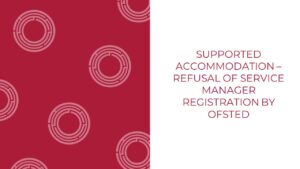The Care Quality Commission’s (“CQC”) use of enforcement action, namely notices of proposal (“NOP”) and notices of decision (“NOD”), to either vary or cancel a provider’s registration is a fairly routine practice for providers who are perceived to have breached regulation(s) under the Health and Social Care Act 2008 (Regulated Activities) Regulations 2014 (“Regulations”). The connection between a perceived failure to fulfil regulatory requirement(s) and enforcement action is evident. The connection becomes more tenuous when a NOP is received for a ‘dormant registration’.
The CQC has statutory power to cancel a provider’s registration in respect of a regulated activity on the grounds that the service provider is not, and has not, been carrying on a regulated activity for a continuous period of 12 months. While this is a discretionary power, meaning that the CQC is not required to cancel a provider’s registration where it is believed they are inactive, it is a power which is being increasingly utilised by the CQC. In short, this means that a provider may face enforcement action for doing nothing at all.
The majority of provider’s will concede that the CQC are right to act where there is an allegation that a provider is not fulfilling its regulatory obligations; for example, not providing safe care or treatment. It is unlikely that a provider will have the same response to having its registration cancelled for doing nothing. The principle behind this power is to ensure that those registered to provide a regulated activity are readily available to any individual who may require its service(s). By actively undertaking the regulated activity, the CQC are assured that a provider’s staff are sufficiently trained, processes and procedures are relevant and sufficient monitoring and oversight is occurring. It also has the added benefit of lightening the list of providers’ that the CQC need to ensure are compliant with regulations. In short, it reduces the CQC’s workload. It is possible that it is for this reason that we are seeing an increase in the CQC’s use of this discretionary power.
At a time where the CQC are attempting to implement a new regulatory approach, continuing to face backlog from the COVID-19 pandemic and facing staff shortages, it is not surprising that it is seeking to efficiently clear a list of inactive providers. However, these struggles are not exclusive to the CQC. Many providers, a number of whom provide domiciliary care, were severely impacted by the effects of COVID-19 and ceased operating or, obtained a registration moments before the COVID-19 pandemic commenced but did not become operational. Now, in a post-COVID-19 environment, these providers are seeking to re-enter the sector but may be at risk of receiving a NOP on the grounds of dormancy.
In our experience, before issuing a NOP of this nature, the CQC will write to the provider asking them to confirm the status of its regulated activity(s). This question often attracts an easy yes or no response, however a provider should consider expanding on this response where there is an intention to recommence the regulated activity. It is possible that a detailed response may reduce the likelihood of receiving a NOP, therefore it may be worth seeking legal advice. Further, in considering a response to this enquiry, a provider should be mindful that it can take time for the CQC to decide on its next steps. In this time, the provider may have reconsidered its initial position and may be taking steps to recommence the regulated activity.
Once the NOP is issued, the provider has 28 days to prepare a response to the proposal. This is an important chance for the provider to put its voice on record. Silence is interpreted as acceptance. While these NOP’s do not normally surpass the length of a page, and a provider may not perceive any issues with its registration being cancelled, obtaining legal advice allows an opportunity to fully debrief an independent third party of the realties of the position. In undertaking this conversation, it may be realised that the regulated activity is in use, there is an intention to use it in the not so distant future or that submitting representations to the NOP affords the provider time to sort its affairs. The crafting of a thorough and fulsome response at this stage in the enforcement process may result in the CQC conceding its points, and the enforcement action concluding.
If this is not the result, then the provider has used the opportunity to put its position on record.
If a NOP is converted to a NOD, the matter then progresses to the First-Tier Tribunal. When hearing a case, the Tribunal must consider the merits of the provider’s service as at the day of the hearing. At Ridouts, it is often our advice for a provider to use the time between NOP, to NOD, to hearing to its benefit. In the case of an application grounded in dormancy, a provider may use this time to obtain more contracts and / or supporting documentation demonstrating its practicing of the regulated activity.
If a provider does not wish to challenge a dormancy NOP and / or NOD, its registration will be cancelled. In issuing a dormancy NOP, the CQC will often note that a provider can re-apply for registration in respect of the regulated activity. While this is true, it must also be considered that this cancellation will be recorded on a provider’s regulatory history. There is every possibility that this may present itself as a hurdle to future registration applications. While there are sound arguments for why a cancellation based on dormancy is distinct from a cancellation based on perceived regulatory failure(s), a provider should be prepared for its application to be met with questions. At Ridouts, we are able to assist a provider in preempting these questions in the hope that the registration process will be smooth.
It is the provider who is the best placed to provide insight into the state of its use of a regulated activity. An assumption of dormancy by the CQC, demonstrated by the issuing of a NOP, should not pressure a provider to retreat but allow it an opportunity to outline the steps it is taking, or has taken, to re-commence its practice. If a provider views cancellation as beneficial, consideration should be given to any future impact this may have on re-registration. For advice and support in responding to a NOP or any enforcement action, call Ridouts on 0207 317 0340.







